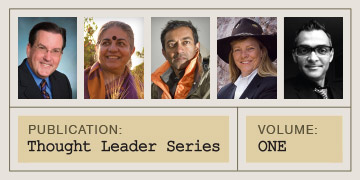Thought Leader Series Book
Serving as both the hub of sustainability at ASU and an aggregator of impactful knowledge, the ASU Global Institute of Sustainability and Innovation created the Thought Leader Series in 2011. The series invites essay contributions from a diverse pool of sustainability’s most celebrated thinkers and problem-solvers, who offer expertise that prompts reflection, provokes the imagination and encourages action. The following collection reflects contributions through 2015.


